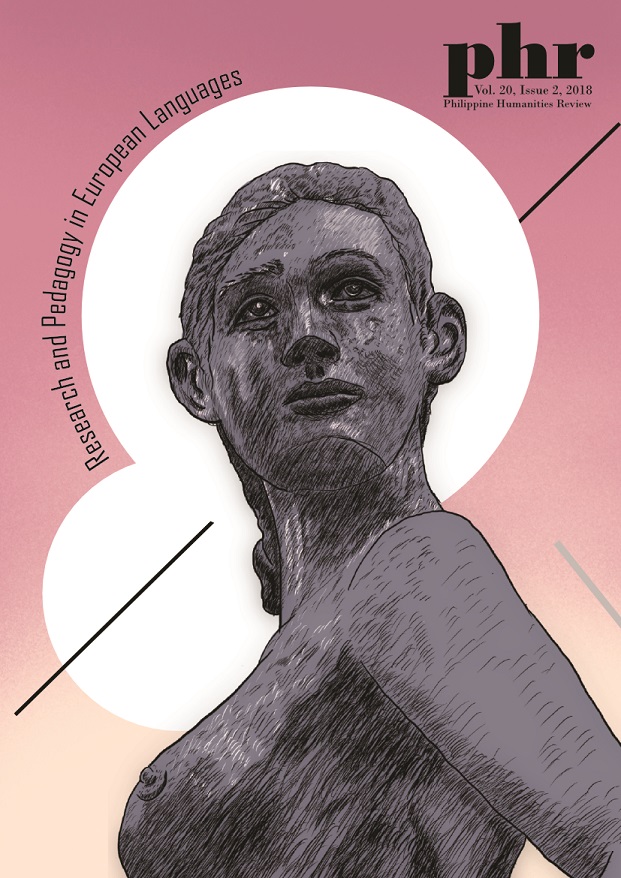Ang Paglayo ng Langit: Pagsusuri sa Salin sa Filipino ng Limang Kabanata ng “L’Éloignement du ciel: Invention et mémoire des mythes chez les Palawan du sud des Philippines”
Abstract
Mahalaga ang pagsasalin upang maunawaan ng mga tao ang mga likhang nasusulat sa wikang hindi nila naiintindihan lalo pa’t kung ang paksa nito ay patungkol sa kanila. Ito ang kaso ng aklat na “L’Éloignement du ciel: Invention et mémoire des mythes chez les Palawan du sud des Philippines” na ukol sa pagsusuring antropolohikal ng limang mito ng mga Pala’wan. Tinalakay sa papel na ito ang mga ginawa bago ang pagsasalin mismo, ang proseso ng pagsasalin, at pagsusuri ng mga suliraning kinaharap na kinabibilangan ng mga tanong sa kaibahan ng Filipino sa Tagalog at kung paano magsalin sa varayting pang-akademya. Napagtantong kaiba ang Filipino sa Tagalog ngunit walang estandardisadong varayting pang[1]akademya. Bunsod nito, kinailangang pagpasyahan kung ano ang gagawin para sa mga hiram na salita, aling wika ang paghihiraman, at paano baybayin ang mga salitang ito. Napagdesisyunang wikang Pala’wan ang uunahin, kasunod ang Espanyol at panghuli ang Ingles at ang pagbabaybay ng mga salitang ito ay susunod sa mga alituntuning nakasaad sa “Binagong Gabay sa Ortograpiya ng Wikang Filipino” ng Komisyon sa Wikang Filipino. Ilang mga salitang kumakatawan sa mga hiram na salita mula sa bawat wika ang tinukoy at inilarawan kung paano ginamit ang mga ito sa salin.
Translation is essential in understanding a work written in a language that one does not understand especially in cases where its subject is a people. This is the case for the book “L’Éloignement du ciel: Invention et mémoire des mythes chez les Palawan du sud des Philippines”, an anthropological analysis of five myths of the oral tradition of the Pala’wan people. Discussed in this paper are the preliminary work done before the translation itself, the process of translation undertaken, and an analysis of the problems encountered in translation relating to the validity of Filipino as a separate language from Tagalog and how to translate in the academic language variety. It was concluded that Filipino is different from Tagalog but that there is no standard academic language variety. Because no standard exists yet, decisions for the translation were made particularly with regards to borrowed words, which language to borrow from, and how to spell these words. It was decided to borrow from the Pala’wan language first, Spanish second and English last and that the spelling of these words should follow the “Binagong Gabay sa Ortograpiya ng Wikang Filipino” of the Commission on the Filipino Language. Representative borrowed words from each language were then presented and their use in the target text explained.
KEYWORDS: pagsasalin (translation), Pala'wan, mito (myth), panghihiram (borrowings), ispeling (spelling)


